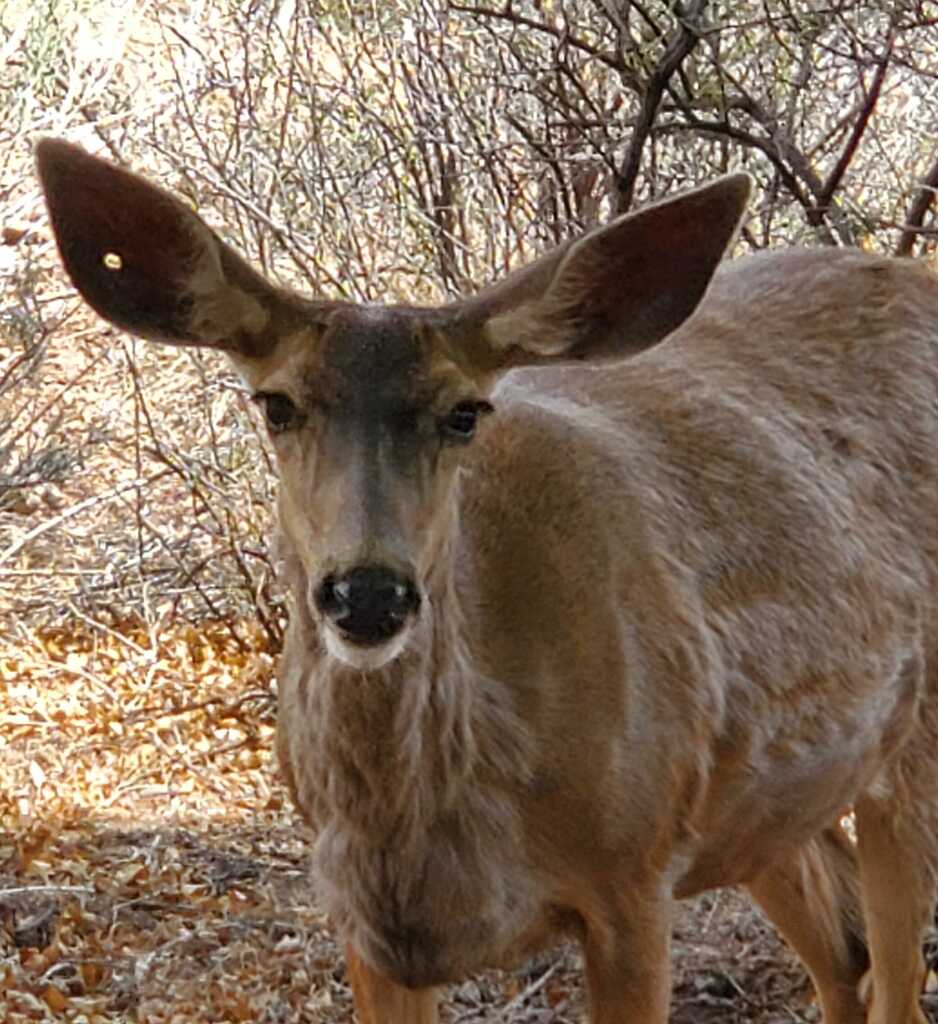Almost every other day, there is a new video or photo on social media showing a wild animal venturing through a Northeast Heights neighborhood, including bears and mountain lions. According to the New Mexico Department of Game and Fish, that’s normal for this time of year.
NMDGF spokesman Ryan Darr said the uptick in sightings is due to numerous factors. He said warmer temperatures mean more people are out to make the sightings and that there is an increase in food sources during the summer and fall, which leads to more wildlife venturing out in search of nourishment. In addition, fewer animals are hibernating and are more likely to be seen.
When asked if NMDGF received more calls for sightings this time of year than in previous years, Darr responded, “No, it does not appear that sightings and calls have increased this year compared to this period during past years.” Darr said NMDGF collectively takes calls for service from Albuquerque and Rio Rancho and does not break down the number of calls by zone. The total number of calls for the month of June were not available as of July 5.
According to Darr, the top service call for NMDGF was for raccoons. Although raccoons can be active year-round, they tend to spend more time sleeping in their dens during the winter months and can be found in the city during the summertime. They are often seen in dumpsters and trash bins but can also be spotted in backyards, sewers, city parks and golf courses.
Rabid animals and crashes
Raccoons, like foxes, skunks and bats, can carry rabies, but according to the Centers for Disease Control and Prevention, there has only been one case of a human dying from rabies transmitted by a raccoon. The CDC says raccoons accounted for 30.3% of all reported wild animal cases of rabies in 2018. Bats were the most frequently reported rabid wildlife species in 2018, accounting for 33% of all cases. Skunks accounted for 20.3% and foxes 7.2% of cases, according to the CDC.
The CDC website says that between 2013-17 bats with rabies were found in every state except Hawaii. Foxes with rabies were found in Alaska, Arizona and New Mexico; and foxes and skunks with rabies were found in Arizona, New Mexico and Texas for the same years. Darr said so far this year there have been no cases of rabid animals or animals with injuries or diseases in the Albuquerque area that NMDGF is aware of. He said residents should call NMDGF if they suspect a wild animal is sick or injured.
Of all the wildlife that pose a threat to humans, deer are one of the most dangerous, mostly due to vehicle collisions with the animals. According to a study by the University of New Mexico, deer accounted for 53% of the animals encountered by humans in animal crashes in New Mexico from 2014-18.
In the same four-year period, there were nine reported fatalities in New Mexico due to animal-involved crashes, with alcohol being involved in two of those crashes. The UNM report says there were a total of 13,348 animal-involved crashes from 2014-18. Of the nine fatalities reported from animal crashes, four involved horses, three involved cow or cattle, one involved elk and one involved deer.
Encroaching on wildlife territory
Comments below videos of mountain lion sightings in northeast Albuquerque have many people expressing concern for children and pets. One comment under a video of a mountain lion in the Heritage East neighborhood reads, “I’m so scared to walk my puppy now,” and another, “me too. I walk my toddler everyday and now I don’t want to.”
Others are more concerned about what humans are doing to the animals. Diana Stauffer, who lives in Sandia Heights South, posted a picture on NextDoor of a deer with what looks like a bullet hole through its ear. Under the photo a caption reads, “Here is a lucky doe. Grateful the low life was a bad shot.” A couple comments suggest the hole is from a tag that fell out of the deer’s ear. Nevertheless, Stauffer says poaching is still a concern.
“There seems to be some disagreement about whether there are poachers in the foothills and if deer are tagged,” Stauffer wrote in an email. “We heard gunshots one night last week. And I think you probably saw the news video of a doe with an arrow in her haunch.”
Hunting deer is common in New Mexico, and an annual bow hunt takes place in the Sandias in early January, but hunts can only take place on authorized land during certain times of the year. Whether or not poaching is going on is up for debate. What is known is that where deer go, mountain lions are sure to follow.
The U.S. Forest Service website says, “Generally speaking, mountain lions can be found wherever deer are present. Your chances of encountering a mountain lion are small. However, mountain lion attacks have been on the rise as humans increasingly enter these cats’ territory.”
Predators in the city
Mountain lions and bears are natural predators that sometimes venture down from the mountains to find food in the city. According to Darr, these predators are just as scared of humans as humans are of them.
“Every once in a while, people have face-to-face encounters with large predators,” Darr wrote in an email. “Do not panic. Chances are they are just as wary of you as you are of them.” If you do encounter a large predator, follow these rules to be safe:
• Do not run. If you see a bear or other large predator, stay calm.
• Stand upright and slowly wave your arms.
• Back away slowly from the animal.
• Look for cubs. Do not come between a mother and her cubs.
• If attacked, fight back aggressively.
As for the recent mountain lion and bear sightings in northeast Albuquerque, Darr says NMDGF were not immediately made aware of the animals. “There was a video of a mountain lion in someone’s yard jumping over a fence that was shown on the news. The news story was the first New Mexico Game and Fish knew about the lion,” Darr said.
“A few days later, on June 23rd, we received a call from New Mexico State Police dispatch around 10-11 p.m. regarding a lion in someone’s yard. It was in the same general area where the news lion was sighted, and we feel it was the same lion. Several attempts were made to sedate and capture the lion but were unsuccessful. The lion left the area and we have not received any further reports or sightings.”
In response to a video sent to NMDGF of different sightings around the Northeast Heights, posted below, Darr responded, “There are several lions and a bear on the YouTube video sent, but we are not aware of any calls associated with any of them.”
To contact New Mexico Game and Fish, call 505-222-4700.


